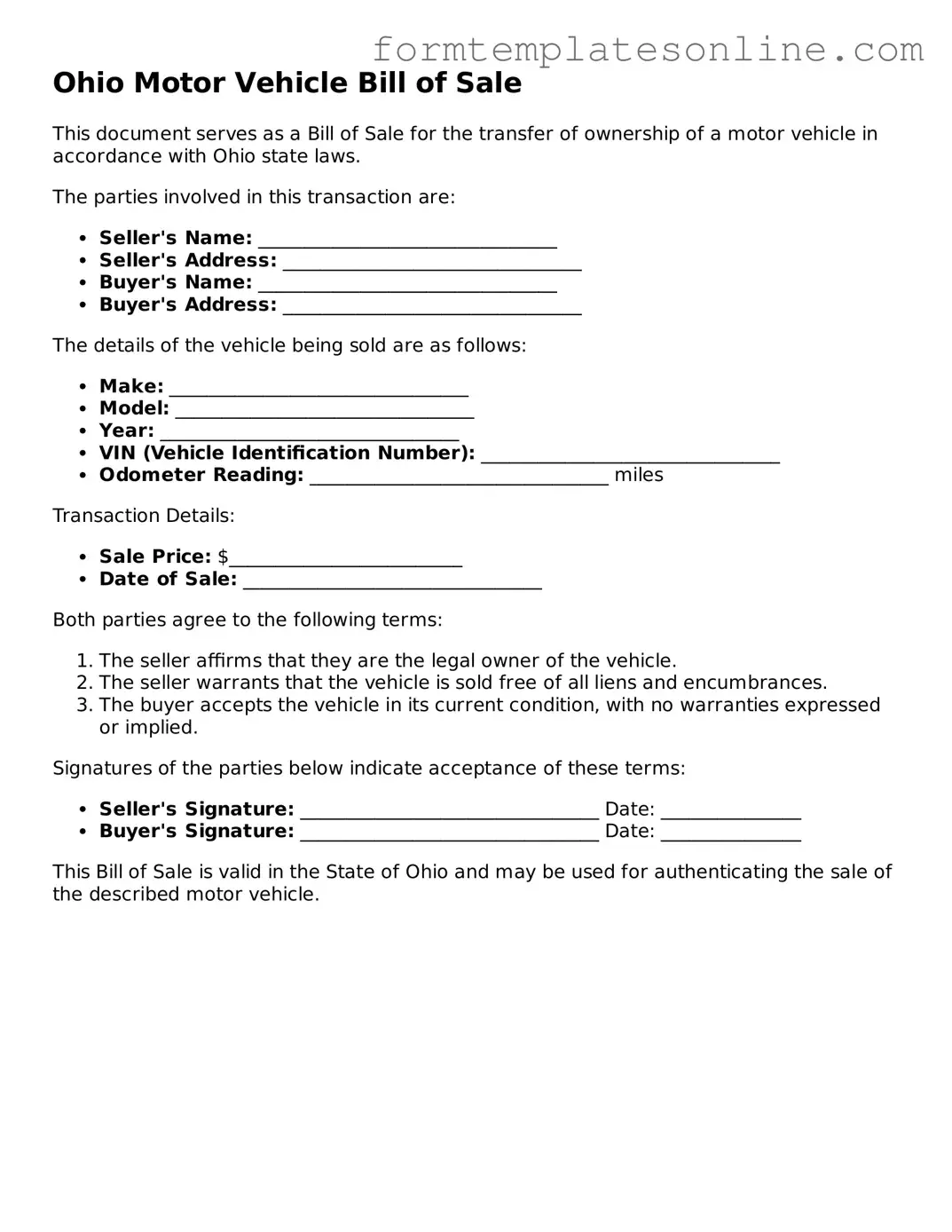What is the Ohio Motor Vehicle Bill of Sale form?
The Ohio Motor Vehicle Bill of Sale form is a legal document that records the sale of a vehicle from one party to another. It serves as proof of the transaction and includes important details such as the buyer's and seller's names, addresses, vehicle identification number (VIN), make, model, year, and the sale price. This form is essential for both the buyer and seller to protect their rights and ensure a smooth transfer of ownership.
Do I need to have the Bill of Sale notarized?
In Ohio, it is not mandatory for the Motor Vehicle Bill of Sale to be notarized. However, having it notarized can provide an additional layer of security and authenticity. It may also help if there are any disputes regarding the sale in the future. While notarization is optional, it is a good practice to consider, especially for higher-value transactions.
How do I complete the Ohio Motor Vehicle Bill of Sale form?
To complete the form, both the seller and buyer need to fill in their personal information, including names and addresses. Next, provide the vehicle details, such as the VIN, make, model, and year. The sale price must also be clearly stated. Both parties should sign and date the document. It’s advisable for each party to keep a copy for their records after the transaction is finalized.
Is the Bill of Sale required for vehicle registration in Ohio?
Yes, the Bill of Sale is often required when registering a vehicle in Ohio. The buyer must present the completed Bill of Sale to the Ohio Bureau of Motor Vehicles (BMV) along with other necessary documents, such as the title and proof of identification. The Bill of Sale helps verify the transaction and supports the transfer of ownership in the state's records.
